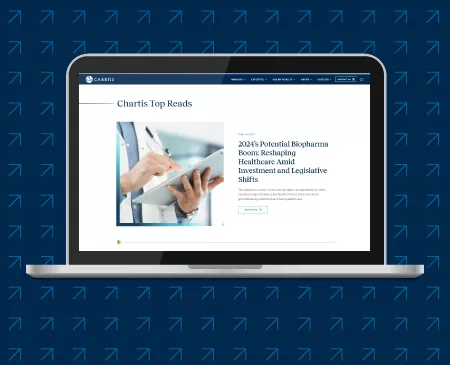Many healthcare leaders have long under appreciated the potential value of the provider enterprise. It has been treated as a politically complex and financially reliant adjunct to the health system, rather than as core to the health system’s ability to achieve its broader strategic objectives. This traditional view has often led to an unsustainable financial drain and poorly aligned enterprise that results in untapped potential contributions, provider burnout on the rise, and financial losses per physician at an all-time high ($278,000 in 2019).1 At the same time, private equity investment in medical practices is exploding, signaling the potential value that the provider enterprise could and should generate.
Passively managing the provider enterprise is no longer an option for most healthcare systems. Leading organizations are beginning to shift their approach to the provider enterprise, from accepting it as a loss leader to repositioning it as a vital component of an integrated clinical enterprise to drive value along clinical, operational, and financial dimensions.
What is a Provider Enterprise?
Any group of physicians and APPs requiring active management for a defined purpose, whether single specialty or multi-specialty, faculty or community, networked or employed, in either ambulatory or hospital-based settings.
Health Systems Are “Losing” Significant Cash on Provider Enterprises
In even the best performing medical groups, costs exceed medical revenue and their need for hospital support is growing at unsustainable rates


While most health systems now employ a large, diverse provider enterprise, many have yet to evolve their operating model and still narrowly view their business in hospital-centric terms, with physicians as “loss leaders” required to attract or acquire patients. Moving toward greater maturity requires viewing the provider enterprise as a strategically and operationally mission-critical part of today’s health system, a vital organ essential for driving value. To achieve optimal performance and deliver value to both health systems and patients/communities, health systems need to create a singular integrated clinical enterprise. Integration of the medical center and provider enterprise enables health systems to optimize care delivery and operations while empowering providers as leaders of the organization and creating direct accountability for performance.
Integrating and Optimizing the Provider Enterprise Can Deliver Transformational Results.
Traditional Health System vs. Integrated Clinical Enterprise

- Suboptimal financial performance
- Siloed planning and growth efforts
- Limited ability to drive performance improvement on key metrics (i.e., access, volume, cost, and quality) and lack of accountability
- Provider burnout and disengagement

- Provider engagement and accountability drives financial and operational performance (i.e., cost management, growth, and efficiency)
- A culture of collaboration and respect produces a fulfilling professional environment with reduced burnout and higher retention
- Provider leadership and decision-making drive consistently superior clinical outcomes and patient experience
Forward-thinking organizations can gain a competitive advantage by reimagining the role and value proposition of their provider enterprise. There are eight critical dimensions of comprehensive provider enterprise value — that include but also go well beyond direct patient revenue — to advance strategic goals and fully optimize the provider enterprise.
8 Critical Dimensions of Comprehensive Provider Enterprise Value


Direct Patient Revenue Capture
The first and most obvious source of value is the creation and capture of revenue from direct patient services delivered by provider-led care teams. An optimized provider enterprise is the growth engine of the health system, through consumer-driven availability to care, multi-modal scheduling options, effective revenue capture, and, ultimately, optimized provider productivity.
WHAT'S REQUIRED:
-
Consumer-driven access model
-
Top-performing revenue cycle
-
Clinical team productivity/effective utilization and support of physicians and APPs

Network Revenue Retention
Maximizing the retention of created revenue within the organization begins with retention of patient lives through care excellence, supported by robust contract management and maintenance of clinical network connectivity and performance, along with patient education and a superb consumer experience.
WHAT’S REQUIRED:
- Internal marketing of clinical excellence
- Reliable referral management
- Ease of internal scheduling
- Identification of cost disincentives for patients or payors
- Capacity adjustment to referral need

Hospital Cost Improvement
The provider enterprise can uniquely contribute to overall health system performance by driving hospital cost improvement programs. While it is certainly true that costs can be improved within the provider enterprise itself, through right-sized workforce, expense management, and care model delivery innovation, a far greater impact can be realized through managing provider-driven costs within the hospital through physician-led clinical variation and management initiatives.
WHAT’S REQUIRED:
- Committed physician leadership to drive improvement efforts
- Clinical variation identification, reporting, and transparency
- Clinical efficiency/throughput cost improvement
- Capacity management (e.g., OR)
- Physician preference item standardization
- Inclusion of hospital cost improvement in clinically integrated network where possible

Population Health/Value-Based Payment Performance
Finally, as the slow but inevitable shift to value-based care continues, the provider enterprise is essential to improving the health of populations and system revenue. Success in value-based contracts depends on the capture of quality incentives and shared savings, as well as minimizing downside risk through a focus on optimizing chronic disease management, identifying cohorts for more intensive care management, establishing clinical protocols and care pathways across the continuum, and investing in digital offerings to support virtual care alternatives.
WHAT’S REQUIRED:
- Appropriate incentive creation in provider enterprise goals and compensation
- Transparent measurement of provider performance
- Thoughtful selection of clinical cost improvement targets
- Technology enablement and analytics to support patient segmentation

System Clinical Thought Leadership
Health systems gain significant value from clinical leaders who are actively engaged in the creation of a forward-looking clinical strategy and regular submission of clinical and clinical-administrative thought leadership content. Whether the topic is what will be different about cancer care five years from now, how providers can help to address health disparities and inequities in care delivery, what will be the impact of genomically engineered treatment, or a host of other topics, clinical thought leaders are essential in discerning where the industry will go and leading the organization in that direction. The high-performing provider enterprise proactively plans for clinical leaders to interact with the C-suite as well as community and business leaders in order to inform system strategy and facilitate improved investments, innovation, acquisition of research dollars, and more.
WHAT’S REQUIRED:
- Provider engagement in the health system’s strategic direction-setting
- Coordination with Marketing for health system reputation enhancement
- Process for internal recognition
- Academic rigor and clinical leadership

Provider Subject Matter Expertise Deployment
Hospitals typically hire many medical directors to provide subject matter expertise. Few are sure they are getting their money’s worth. It is a provider enterprise function to optimize the deployment of provider subject matter expertise across the enterprise, ensuring clear expectations, right-sized provider leadership, and optimized use of provider time to inform topics such as evidence-based practice, infection prevention, credentialing, and technology enablement.
WHAT’S REQUIRED:
- Overview of investment and rational sizing/deployment
- Task/capability matching
- Oversight and measurement of goals/performance
- Subject matter expert training and orientation
- Central point of accumulation/management of requests
- Oversight of affiliate subject matter expert work

Strategic Execution and Change Management
When it comes to sustainable change, reliable execution, risk reduction, and timeliness are everything. Whether it be electronic health record (EHR) implementation or optimization, service center implementation, or execution of a virtual care strategy, robust provider enterprise-driven change management is critical to the successful execution of strategic priorities leading to enhanced experience and benefit realization. The high-performing provider enterprise is a change leader. Where providers go, others will follow, supporting change in the remainder of the organization.
WHAT’S REQUIRED:
- Clarity around provider enterprise ownership of certain strategies (beyond championing)
- Transparent endpoint goals, milestones, and deliverables
- Adequate change management training for provider enterprise leaders

Clinical Differentiation/Reputation-Fueled Growth
The provider enterprise largely creates the health system’s clinical brand and reputation. If strong, it drives market share through excellence; awards; and local, regional, or national recognition. Creating this sort of differentiation requires superior clinical outcomes and high reliability, service line or clinical program excellence, and enhanced consumer and patient experience to promote loyalty and enhanced digital tools to support leading-edge reputation.
WHAT’S REQUIRED:
- Top-tier, measured “triple aim” performance
- National/regional awards and recognitions
- Centers of distinction (payors and other)
- Local/regional/national marketing/media
- Acquisition and marketing of top talent
As organizations acknowledge the eight critical dimensions of provider enterprise value, they begin to unlock the value of the provider enterprise as a critical driver of the health system’s clinical, operational, and financial performance. This value is fundamental to achieving broader strategic goals.
The Way Forward
With financial performance of the provider enterprise increasingly unsustainable, healthcare systems are beginning to reimagine their relationship with the provider enterprise. Only organizations with the will and capabilities to actively manage their provider enterprise across eight interrelated value dimensions will achieve leading-edge performance and endure in today’s fast-changing environment.
With so much on the line, knowing where to start on the journey to high performance can be overwhelming for the struggling provider enterprise. As organizations broaden their view of the types of value the provider enterprise should deliver to the system, leaders are asking how best to work toward greater maturity and value generation. Identifying specific strengths and opportunities through a comprehensive provider enterprise maturity assessment can help leadership prioritize and focus time and resources.
The next article in our series on capturing full provider enterprise value will provide insights on 10 essential provider enterprise capabilities and the steps required to move your provider enterprise toward full maturity.
Chartis understands the complexities of the provider enterprise. We work with clients to identify and realize the value of the provider enterprise, offering comprehensive, solution-based services to support you in your journey to high performance.
© 2025 The Chartis Group, LLC. All rights reserved. This content draws on the research and experience of Chartis consultants and other sources. It is for general information purposes only and should not be used as a substitute for consultation with professional advisors.




